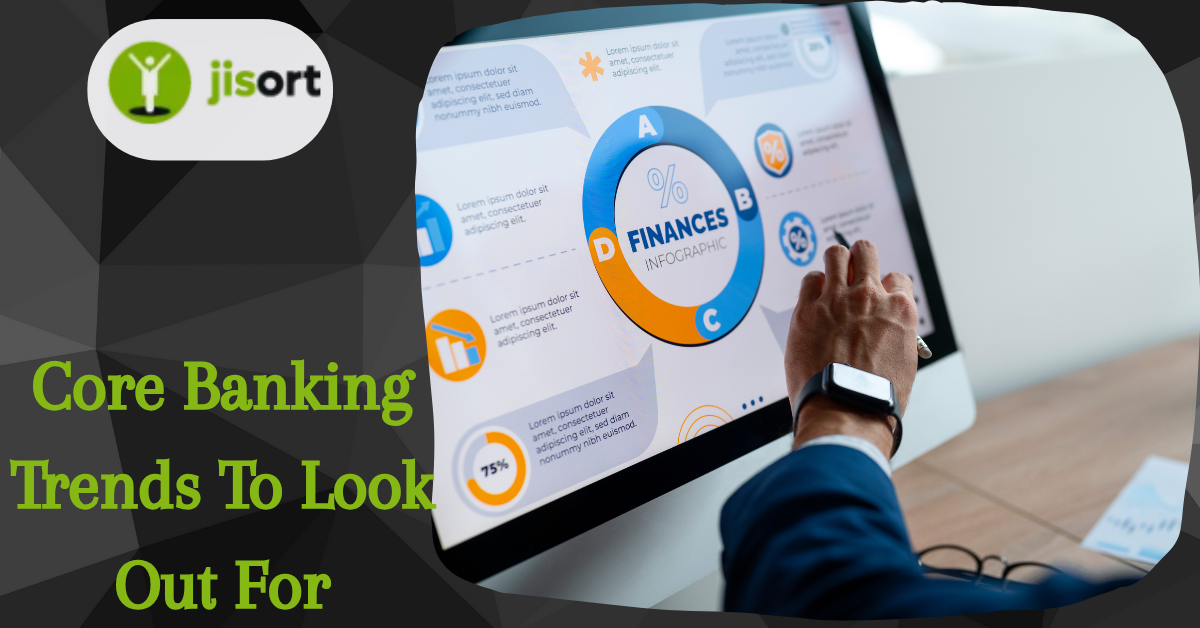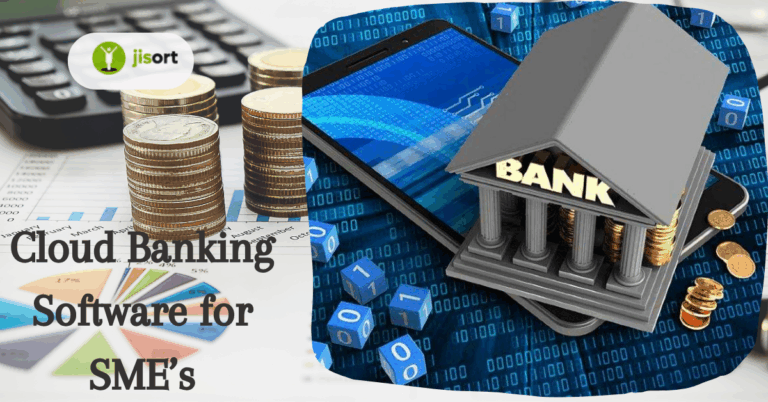
The banking world isn’t just changing—it’s experiencing a complete metamorphosis. You know what’s fascinating? The core banking trends we’re witnessing today aren’t just minor tweaks to existing systems. They’re fundamental shifts that are rewriting the rules of how financial institutions operate, compete, and serve their customers.
Ready to stay ahead of the curve? Visit Jisort.com for cutting-edge insights on financial technology trends and digital transformation strategies that can help your organization navigate this evolving landscape.
1. Digital Transformation and Modernization

Let’s be honest—traditional banking is becoming a relic of the past. The core banking trends driving this transformation are more than just technological upgrades; they’re survival strategies. Banks that don’t adapt risk becoming irrelevant faster than you can say “mobile payment.”
The shift toward cloud-first infrastructure has become non-negotiable. Banks are migrating their legacy systems to cloud platforms, not because it’s trendy, but because it’s the only way to stay competitive.
This migration enables real-time processing, better scalability, and the agility needed to respond to market changes instantly.
API-Driven Architecture Changes Everything
Here’s where things get interesting. The move toward API-driven architecture isn’t just a technical decision—it’s a business strategy. Banks are opening their systems through APIs, creating ecosystems where third-party developers can build innovative solutions. This approach has birthed the open banking movement, fundamentally changing how financial services are delivered.
2. Customer Experience Revolution

Remember when banking meant standing in long queues? Those days are gone. Today’s core banking trends prioritize seamless, personalized customer experiences that make traditional banking feel backward.
Mobile-first interactions have become the standard. Customers expect to handle everything from their smartphones—account opening, loan applications, investment management, and even complex financial planning. Banks that can’t deliver this experience are losing customers to those who can.
The personalization game has changed dramatically. Banks now use AI and machine learning to understand customer behavior patterns, predict needs, and offer tailored financial products. It’s like having a personal financial advisor who knows your spending habits better than you do.
Omnichannel Banking Becomes Essential
The most successful banks today don’t just offer multiple channels—they integrate them seamlessly. Whether you start a transaction on your phone, continue it on your laptop, or complete it at an ATM, the experience should feel continuous and natural.
3. Fintech Integration and Competition
One of the most surprising core banking trends is the shift from viewing fintech companies as threats to embracing them as partners. This collaborative approach has created innovative solutions that neither traditional banks nor fintech startups could develop alone.
Banking-as-a-Service (BaaS) models have emerged as game-changers. Traditional banks now offer their infrastructure to fintech companies, while fintech firms provide the user experience and innovation. Everyone wins—banks monetize their infrastructure, fintechs get regulatory compliance, and customers get better products.
| Partnership Model | Benefits for Banks | Benefits for Fintechs |
|---|---|---|
| Infrastructure Sharing | Revenue from licensing | Reduced compliance costs |
| Co-branded Products | Expanded customer base | Established trust |
| Technology Integration | Innovation access | Regulatory expertise |
Embedded Finance Changes the Game
Embedded finance represents one of the most transformative core banking trends. Financial services are now integrated into non-financial platforms—think buying insurance while booking a flight or getting a loan while shopping online. This trend is creating new revenue streams and changing how customers interact with financial services.
4. Regulatory Technology (RegTech)

Regulatory compliance has always been a headache for banks. But the latest core banking trends in RegTech are turning compliance from a burden into a competitive advantage. Automated compliance monitoring systems can detect issues in real-time, preventing violations before they happen.
Anti-money laundering (AML) systems powered by AI can process millions of transactions simultaneously, flagging suspicious activities with unprecedented accuracy. These systems don’t just meet regulatory requirements—they exceed them while reducing operational costs.
Real-Time Reporting Transforms Operations
Banks can now generate regulatory reports in real-time rather than spending weeks compiling data. This capability not only satisfies regulators but also provides banks with better insights into their operations and risk exposure.
5. Emerging Payment Technologies

The payment landscape is experiencing radical transformation. Central Bank Digital Currencies (CBDCs) are no longer theoretical concepts—they’re becoming reality. Countries worldwide are piloting or implementing CBDCs, forcing banks to adapt their systems accordingly.
Cross-border payments, traditionally slow and expensive, are being revolutionized by new technologies. Real-time payment systems are making international transfers as fast as domestic ones, eliminating the frustration of multi-day processing times.
Here’s what’s particularly exciting: cryptocurrency integration is moving from experimental to mainstream. Banks are offering crypto custody services, enabling cryptocurrency transactions, and even issuing their own digital assets.
The Rise of Invisible Payments
One of the most intriguing core banking trends is the move toward “invisible” payments—transactions that happen seamlessly without explicit user action. Imagine your car paying for fuel automatically or your smart home paying utility bills based on usage patterns.
6. Artificial Intelligence and Machine Learning

Artificial intelligence isn’t just a buzzword in banking—it’s becoming the brain behind modern financial services. AI-powered fraud detection systems can identify suspicious patterns that human analysts might miss, protecting both banks and customers from financial crimes.
Credit risk assessment has been transformed by machine learning algorithms that consider thousands of variables to make lending decisions. These systems can approve loans in minutes while maintaining lower default rates than traditional methods.
Customer service is being revolutionized through AI chatbots and virtual assistants. These systems handle routine inquiries 24/7, freeing human agents to focus on complex issues that require empathy and creative problem-solving.
7. Cybersecurity and Data Protection
With digital transformation comes increased cyber risk. The most critical core banking trends in cybersecurity focus on proactive protection rather than reactive response. Zero-trust security frameworks assume that threats exist both inside and outside the network, requiring verification for every access request.
Biometric authentication is replacing passwords across banking platforms. Fingerprint scanning, facial recognition, and voice authentication provide stronger security while improving user experience. Nobody wants to remember complex passwords anyway.
Advanced Threat Detection
Modern banks employ AI-powered threat detection systems that learn from attack patterns and adapt their defenses accordingly. These systems can identify and neutralize threats before they cause damage, maintaining the trust that banking relationships require.
8. Sustainability and ESG Banking
Environmental consciousness is reshaping banking operations. Green finance initiatives are among the fastest-growing core banking trends, with banks offering preferential rates for environmentally friendly projects and investments.
Carbon footprint tracking has become standard practice. Banks are measuring and reporting their environmental impact while helping customers make more sustainable financial choices. Some banks even offer carbon offset programs tied to customer spending patterns.
Discover how sustainable banking practices can benefit your organization and contribute to environmental responsibility while maintaining profitability.
9. Future-Ready Infrastructure
Blockchain technology is moving beyond cryptocurrency applications into core banking operations. Distributed ledger technology offers transparency, security, and efficiency improvements that traditional databases can’t match.
Quantum computing, while still emerging, promises to revolutionize data processing and security. Banks are beginning to prepare for a quantum-enabled future by developing quantum-resistant encryption methods and exploring quantum computing applications.
The Internet of Things (IoT) is creating new opportunities for banking services. Smart devices can initiate transactions, monitor account balances, and even make investment decisions based on programmed parameters.
Building Tomorrow’s Banking Today

5G networks are enabling faster, more reliable mobile banking experiences. The increased bandwidth and reduced latency support real-time video consultations with financial advisors, augmented reality banking applications, and seamless integration of banking services into everyday activities.
10. Operational Efficiency
Process automation is eliminating repetitive tasks that once consumed significant human resources. Robotic process automation (RPA) handles routine operations like data entry, account reconciliation, and report generation, allowing staff to focus on strategic initiatives.
Back-office operations are being streamlined through intelligent automation systems that can handle complex workflows with minimal human intervention. These systems reduce errors, accelerate processing times, and lower operational costs.
The workforce transformation accompanying these changes requires strategic planning. Banks are investing in retraining programs to help employees transition from routine tasks to more strategic roles that require human judgment and creativity.
Making Core Banking Trends Work for You
Understanding these trends is just the beginning. Successful implementation requires careful planning, adequate resources, and strong leadership commitment. Start by identifying which trends align with your organization’s strategic goals and customer needs.
Remember, you don’t need to implement every trend simultaneously. Focus on the core banking trends that offer the greatest potential impact for your specific situation. Whether you’re a traditional bank looking to modernize or a fintech startup seeking to scale, these trends provide a roadmap for success.
Need expert guidance on implementing these banking innovations? Contact Jisort.com’s banking transformation specialists to develop a customized strategy that aligns with your organization’s unique requirements and goals.
The banking industry’s transformation is accelerating, and staying informed about core banking trends isn’t optional—it’s essential for survival and growth. The institutions that embrace these changes will thrive, while those that resist will struggle to remain relevant in an increasingly digital world.
Stay updated with the latest financial technology trends and banking innovations. Subscribe to industry publications like American Banker and Fintech News for ongoing insights into the evolving banking landscape.
Read Also: Why More SMEs Are Turning to Cloud Banking Software




